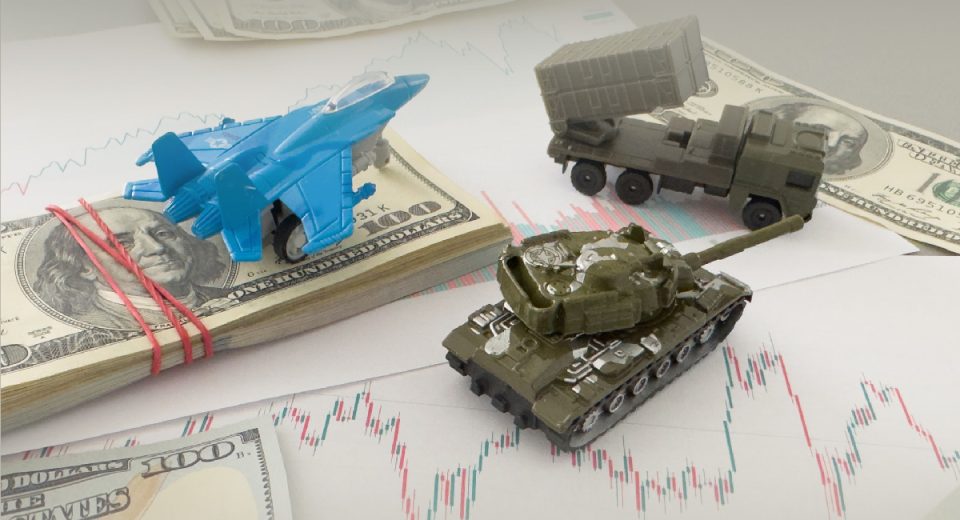Most Popular Technical Indicators for Swing Trading

Swing traders aim to capture small price movements by holding assets for a short timeframe. While intraday traders liquidate positions within a single day, swing traders hold trades till the current momentum lasts, which could be more than a day and may even extend to several days. This is the reason their profit or loss per transaction is higher than that of intraday traders, requiring much deeper analysis of market trends.
As the name suggests, swing trading focuses on highs (when the market peaks before retracing) and lows (when the market troughs before rising). Such swings offer attractive opportunity opportunities to go short on market highs and long on lows. This strategy requires a keen understanding of technical analysis to identify market trends and the most opportune entry and exit points.
Technical analysis becomes simpler by using trading tools like indicators. Before delving into the most popular technical indicators, let’s look at the types of indicators.
Types of Technical Indicators for Swing Trading
Broadly speaking, there are three categories of indicators:
Trend Indicators: These indicators smooth out short-term price volatility to identify the direction of the market and whether a trend has been established.
Volume Indicators: They are very simple indicators that identify how actively an asset is being traded at a specific point in time. By doing so, volume indicators highlight the buying and selling pressure in the market.
Momentum Indicators: They help identify the strength of price movements or the rate at which the price of an asset is rising or falling. Such indicators are useful in identifying the onset of reversals.
4 Popular Technical Indicators
Moving Average (MA)
MA is a line connecting the average closing prices over time. It adjusts continuously when new data points are added and older ones are dropped. It can be calculated over 5 days, 10 days, 20 days to even 200 days. This allows traders to consider the market direction, as the MA line removes the hourly or daily noise of price changes. A rising MA indicates that the asset is in an uptrend, while a downward sloping MA reflects a downtrend.
Swing traders make use of two MA lines:
- A short-term line – usually between 5 to 50 days – This fast-moving MA reacts quickly to price changes.
- A long-term line – usually between 100 to 200 days – This slower-moving MA gives more weightage to the general trend being set.
These two MA lines are used to predict a reversal in market prices by analysing their crossover points.
A Bullish Crossover: This takes place when the fast-moving MA cuts the slow-moving MA from below. It suggests a potential shift in market sentiment from bearish to bullish. This signals an entry point for long positions or an exit point for short positions.
A Bearish Crossover: This takes place when the fast-moving MA cuts the slow MA from above, indicating a reversal from an uptrend to a downtrend. This signals an entry point for short potions or an exit point for long positions.
Relative Strength Index (RSI)
The RSI is a popular momentum indicator that helps traders identify overbought and oversold conditions to make better trading decisions. This indicator considers the past 14 periods, which could be days, weeks, hours or any other timeframe, as per the trader’s preference.
First, it displays whether the closing price was higher or lower than the previous close:
- If the closing price is higher than the previous close, it signals upward momentum.
- If the closing price is lower than the previous close, it signals a downward pressure.
Then it calculates a ratio to determine the strength of these moves. The ratio assists traders in knowing if a market is overbought (multiple positive closes, suggesting a potential reversal) or oversold (multiple negative closes suggesting potential bounce-back).
The RSI ratio ranges from 0 to 100:
- Over 70: This indicates the asset is overbought and prices may decline. It is a signal to close a long position or open a short position.
- Below 30: This indicates the asset is oversold, suggesting a potential rebound in prices. This signals to go long or exit a short position.
Swing traders must note that the RSI does not give a clear signal of market direction, as markets can remain overbought or oversold for a longer duration, especially during strong trends.
Stochastic Oscillator
Similar to RSI, the Stochastic Oscillator is a momentum indicator. Although it uses different mathematical models to calculate the value, the information is similar to what the RSI indicates.
The Stochastic Oscillator also ranges between 0 to 100 but the overbought and oversold levels are 80 and 20, respectively.
This indicator creates two lines in the trading chart. The first is a stochastic oscillator and the other represents a 3-day moving average. The intersection of these two lines indicates a possible reversal.
Ease of Movement (EOM)
EOM is designed to offer insights into the relationship between volume and price movements. Here volume refers to the extent of trading activity within a particular period, while price action is the movement of asset prices during the same period. The EOM indicator aims to analyse how changes in volume affect price action.
Traders can examine this relationship and understand the strength and sustainability of price trends.
The EOM indicator is plotted on a chart alongside the asset’s price action. The indicator fluctuates as a line fluctuating around a baseline of zero.
- When the EOM crosses above the zero line, it indicates buying pressure.
- When the EOM falls below zero, it signals selling pressure.
The EOM also helps in identifying whether market movements are being driven by the low volume of trades. If there is a steep rise or fall in the EOM line, but the volume remains low, it suggests that the current price trend is not sustainable and could potentially reverse.
It’s important to note that none of the trading tools are foolproof and may generate false signals. It’s best to use at least two indicators for good technical analysis to make better trading decisions.
To Sum Up
- Swing traders aim to enter and exit positions at market highs and lows, as these offer the most attractive opportunity opportunities.
- As the risk to reward ratio is higher, swing trading requires a keener understanding of technical analysis to identify market trends.
- There are 3 main types of technical indicators: Trend, Volume, and Momentum
- Moving Average (MA) is a trend indicator that uses a short-term and a long-term line for identifying entry and exits at crossovers.
- Relative Strength Index (RSI) is a momentum indicator that identifies overbought and oversold conditions.
- Stochastic Oscillator uses a momentum line and an MA line to signal possible reversals.
- The Ease of Movement (EOM) indicator offers insights into the relationship between volume and price movements.
Disclaimer:
All data, information and materials are published and provided “as is” solely for informational purposes only, and is not intended nor should be considered, in any way, as investment advice, recommendations, and/or suggestions for performing any actions with financial instruments. The information and opinions presented do not take into account any particular individual’s investment objectives, financial situation or needs, and hence does not constitute as an advice or a recommendation with respect to any investment product. All investors should seek advice from certified financial advisors based on their unique situation before making any investment decisions in accordance to their personal risk appetite. Blackwell Global endeavors to ensure that the information provided is complete and correct, but make no representation as to the actuality, accuracy or completeness of the information. Information, data and opinions may change without notice and Blackwell Global is not obliged to update on the changes. The opinions and views expressed are solely those of the authors and analysts and do not necessarily represent that of Blackwell Global or its management, shareholders, and affiliates. Any projections or views of the market provided may not prove to be accurate. Past performance is not necessarily an indicative of future performance. Blackwell Global assumes no liability for any loss arising directly or indirectly from use of or reliance on such information here in contained. Reproduction of this information, in whole or in part, is not permitted.




